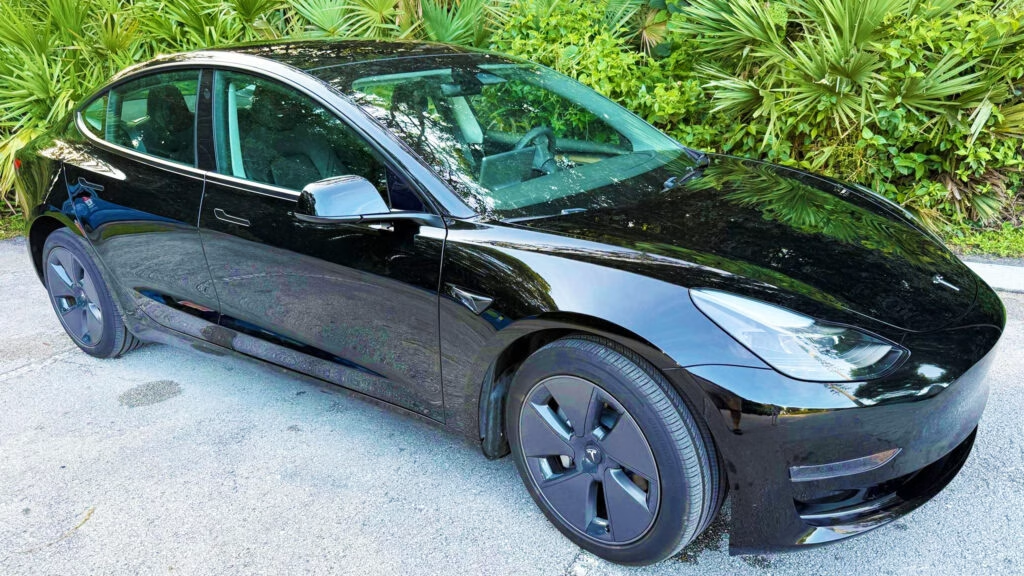Why Did This Tesla Model 3 Lose Over Half Its Value in Just 18 Months?
Picture this: you drive a brand-new Tesla Model 3 off the lot, feeling pretty good about your $41,890 investment. Fast forward just a year and a half, and that same car, with a modest 35,500 miles on the odometer, fetches only $20,500 at auction. Ouch. If you’re wondering how a car that’s barely broken in can lose more than half its value so quickly, you’re not alone. Let’s dig into what’s really going on with Tesla Model 3 resale values—and what it means for buyers and sellers alike.
What’s Under the Hood of This Model 3, and Does It Still Hold Up?
This particular Model 3 is the rear-wheel-drive version from late 2023, powered by a 57.5 kWh battery and a 271-horsepower electric motor. That combo delivers a solid 272 miles of range—enough for most daily commutes and even the occasional road trip. Performance-wise, it’s no slouch, and for the average driver, it’s more than enough car.
Despite missing out on the latest “Highland” refresh, this Model 3 isn’t exactly bare-bones. You still get 18-inch wheels, a panoramic glass roof, heated seats front and rear, and Tesla’s signature 15-inch touchscreen. In short, it’s got all the essentials that made the Model 3 a hit in the first place.
Why Are Used EVs—Especially Teslas—Depreciating So Fast?
Here’s where things get interesting. Electric vehicles, Teslas included, have been hit with a double whammy when it comes to resale value. First, the pace of innovation in the EV world is relentless. Newer models arrive with better range, faster charging, and flashier tech every year. The 2023 Model 3, for example, suddenly looks a little dated next to the refreshed Highland version, which sports a sleeker design and upgraded interior.
Second, the used EV market is still finding its footing. According to data from iSeeCars, used EVs depreciate about 49% after five years, compared to 38% for gasoline cars. That’s a big gap, and it’s even more pronounced for high-mileage or pre-refresh Teslas. Throw in recent price cuts on new Teslas, and the bottom falls out for used values.
Does High Mileage Matter More for EVs Than Gas Cars?
Mileage is always a factor in used car prices, but it’s a bit of a gray area with EVs. On one hand, electric motors have fewer moving parts and generally require less maintenance than traditional engines. On the other, battery degradation is a real concern for buyers. While Tesla’s batteries are known for their longevity, 35,500 miles in 18 months is considered high usage. Still, for a car that’s just over a year old, that shouldn’t account for such a dramatic drop in value.
How Do Market Forces and Brand Perception Play a Role?
It’s not just about the car itself. Tesla’s brand image has become more polarizing in recent years, partly due to CEO Elon Musk’s high-profile ventures and political involvement. This can influence buyer sentiment, especially among those who want their car to make a statement—or not make one. Plus, as more automakers flood the market with competitive EVs, Tesla’s early-mover advantage is shrinking.
There’s also the matter of incentives. Federal and state tax credits for new EVs make buying new more attractive, which can push down demand (and prices) for used models. And with Tesla frequently adjusting its pricing strategy, used car values can swing wildly in response.
Is Now the Time to Buy a Used Model 3?
If you’ve been eyeing a Tesla but balked at the new car price, the current market could be a golden opportunity. A well-equipped, lightly used Model 3 for around $20,000? That’s a steal compared to just a year ago. For buyers, the key is to check the battery health and verify the car’s service history. For sellers, it’s a tough pill to swallow, but the reality is that EV depreciation is part of the current landscape.
What’s the Big Takeaway for EV Owners and Shoppers?
The bottom line: EVs, and Teslas in particular, are depreciating faster than many owners expected. But for savvy buyers, that means bargains are out there—especially if you’re willing to drive a slightly older model with a few extra miles. The big takeaway? Navigating the EV market isn’t about perfection—it’s about smarter adjustments. Start with one change this week, whether it’s researching battery health or timing your purchase, and you’ll likely spot the difference by month’s end.

